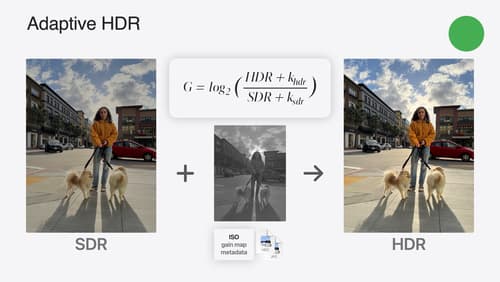SwiftUI perceptual color
Asked on 2024-08-16
1 search
In the context of SwiftUI and perceptual color, there are several new features and enhancements introduced at WWDC 2024. SwiftUI now supports mesh gradients, which are useful for creating dynamic backgrounds or adding visual distinction to surfaces. These gradients are made from a grid of points, each with an associated color, and SwiftUI interpolates between these colors to create a color fill. This allows for beautiful color effects and dynamic visual experiences.
Additionally, SwiftUI has introduced a new mix modifier on colors, allowing you to blend colors together by a specified amount. This enhances the ability to create visually appealing interfaces with smooth color transitions.
For more detailed information on these features, you can refer to the sessions:
- Create custom visual effects with SwiftUI (06:21)
- What’s new in SwiftUI (16:18)
These sessions cover the new graphics capabilities and color treatments available in SwiftUI.

SwiftUI essentials
Join us on a tour of SwiftUI, Apple’s declarative user interface framework. Learn essential concepts for building apps in SwiftUI, like views, state variables, and layout. Discover the breadth of APIs for building fully featured experiences and crafting unique custom components. Whether you’re brand new to SwiftUI or an experienced developer, you’ll learn how to take advantage of what SwiftUI has to offer when building great apps.

Use HDR for dynamic image experiences in your app
Discover how to read and write HDR images and process HDR content in your app. Explore the new supported HDR image formats and advanced methods for displaying HDR images. Find out how HDR content can coexist with your user interface — and what to watch out for when adding HDR image support to your app.

What’s new in SwiftUI
Learn how you can use SwiftUI to build great apps for any Apple platform. Explore a fresh new look and feel for tabs and documents on iPadOS. Improve your window management with new windowing APIs, and gain more control over immersive spaces and volumes in your visionOS apps. We’ll also take you through other exciting refinements that help you make expressive charts, customize and layout text, and so much more.
